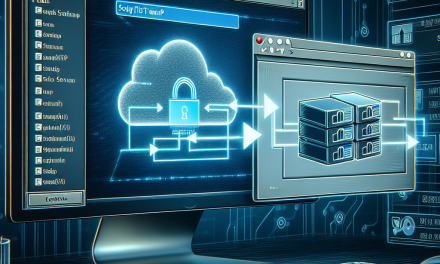Introduction
Windows Server environments are integral to the infrastructure of many organizations, managing everything from user accounts to file sharing and applications. Proper policy enforcement is crucial in ensuring security, compliance, and optimal performance. In this article, we dive into best practices for policy enforcement on Windows Server, providing you with actionable insights to enhance your server management strategies.
1. Utilize Group Policy Objects (GPOs)
What are GPOs?
Group Policy Objects are a powerful feature in Windows Server that enable centralized management and configuration of operating systems, applications, and users.
Best Practices:
- Organize GPOs Logically: Structure your GPOs in a way that reflects your organizational hierarchy, making it easier to manage and apply policies.
- Limit GPO Scope: Apply GPOs to specific Organizational Units (OUs) to avoid unnecessary policy application to all users and systems, which can lead to conflicts.
- Use Security Filtering: Implement security filtering to target specific groups or users, ensuring that only relevant entities receive the intended policies.
2. Regularly Update and Review Policies
The Importance of Updates
As technology and organizational needs evolve, your policies must adapt accordingly.
Best Practices:
- Schedule Regular Reviews: Conduct periodic reviews of your GPOs and other policies to ensure they align with current organizational goals and compliance requirements.
- Test Changes: Always test policy changes in a controlled environment before rolling them out to production servers to mitigate any risk of disruption.
- Version Control: Use versioning for your GPOs to keep track of changes and allow for easy rollback if needed.
3. Implement Security Policies
Why Security Matters
Security policies are critical for protecting sensitive data and ensuring compliance with regulations such as GDPR, HIPAA, etc.
Best Practices:
- Password Policies: Enforce strong password policies, including complexity requirements and expiration intervals.
- User Rights Assignment: Carefully define user rights and permissions to ensure that users have the minimum access required to perform their tasks (principle of least privilege).
- Audit Policies: Enable audit policies to monitor and review user actions, helping to identify and respond to suspicious activities promptly.
4. Utilize Desired State Configuration (DSC)
What is DSC?
Desired State Configuration is a management platform in PowerShell that enables you to manage your infrastructure through code.
Best Practices:
- Define Configuration as Code: Use DSC to define your desired configurations, making it easier to manage complex settings across multiple servers consistently.
- Monitor Compliance: Regularly check the compliance status of your servers against defined configurations, ensuring that they remain within an acceptable state.
- Integrate with CI/CD Pipelines: Incorporate DSC into your continuous integration and delivery pipelines to automate policy enforcement as part of your deployment processes.
5. Implement Remote Server Administration Tools (RSAT)
Why Use RSAT?
Remote Server Administration Tools allow IT administrators to manage Windows Server roles and features from a remote machine.
Best Practices:
- Centralized Management: Use RSAT to manage multiple servers from a single console, simplifying policy enforcement and reducing administrative overhead.
- Stay Updated: Regularly update RSAT to benefit from the latest features and security patches.
6. Monitor and Audit Policy Compliance
The Role of Monitoring
Continuous monitoring and auditing are essential for ensuring that your policies are effectively enforced.
Best Practices:
- Use Event Logs: Regularly review event logs and use monitoring tools to track GPO application status and compliance.
- Adjust Based on Findings: Use audit logs to identify areas where policies may not be enforced as intended, enabling you to make necessary adjustments.
- Employ Reporting Tools: Leverage reporting tools and dashboards for a real-time view of policy enforcement across your environment.
7. Backup and Recovery Plan
Why You Need a Backup Plan
Unexpected issues can occur, making it essential to have a reliable backup and recovery plan for GPOs and server settings.
Best Practices:
- Regular Backups: Implement a routine backup schedule for your GPOs and server configurations to ensure you can restore settings if necessary.
- Test Recovery Procedures: Regularly test your recovery actions to ensure that they work effectively and quickly in case of any disruptions.
Conclusion
Effective Windows Server policy enforcement is vital for security, performance, and compliance in today’s complex IT landscapes. By leveraging the best practices described above, organizations can establish a robust policy framework that minimizes risks and enhances overall server management. Implementation of these strategies will not only streamline administrative workloads but also contribute to a safer and more efficient IT environment.
By following these best practices, you can ensure that your Windows Server instance remains not just compliant but also proficient, setting a strong foundation for your organization’s IT strategy.
About WafaTech
WafaTech is dedicated to providing insightful articles and resources for IT professionals and organizations looking to enhance their technology practices. Stay tuned for more best practices and insights to keep your systems running smoothly and securely.





